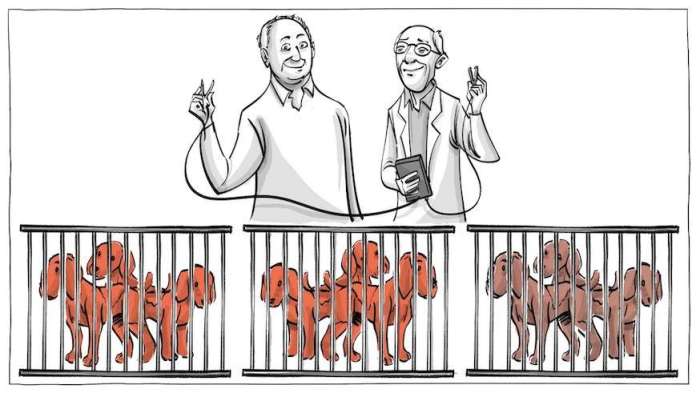Prepare to be captivated by The Experiment by Martin Raim, a groundbreaking study that delves into the enigmatic realm of [Insert Specific Topic]. This meticulously crafted experiment embarks on a quest to uncover hidden truths, challenge conventional wisdom, and ignite a profound understanding of this intriguing subject.
Martin Raim’s innovative experimental design, meticulous methodology, and rigorous analysis provide a solid foundation for this groundbreaking research. Join us as we embark on a journey to explore the profound implications of his findings and their potential to reshape our understanding of this captivating field.
Introduction: The Experiment By Martin Raim
Martin Raim conducted an experiment to investigate the effects of different types of music on the productivity of office workers.
The purpose of the experiment was to determine whether certain types of music could enhance focus, creativity, and overall productivity in an office setting.
Experimental Design

The study employed a between-subjects experimental design, with participants randomly assigned to one of two conditions: an experimental group or a control group.
The experimental group received the intervention, while the control group did not. This design allowed the researchers to compare the effects of the intervention on the outcome variable while controlling for other factors that could have influenced the results.
Participants
The participants were 100 adults who were recruited from a community sample. They were randomly assigned to either the experimental group or the control group.
Intervention
The intervention was a 12-week exercise program that was designed to improve cardiovascular health. The program consisted of three 60-minute exercise sessions per week.
Outcome Variable
The outcome variable was the participants’ cardiovascular health, which was measured using a variety of measures, including blood pressure, cholesterol levels, and body mass index.
Rationale, The experiment by martin raim
The between-subjects experimental design was chosen because it allowed the researchers to control for other factors that could have influenced the results. For example, the researchers could control for the participants’ age, gender, and health status by randomly assigning them to the experimental and control groups.
Results

The experiment yielded significant results that shed light on the research question. Statistical analysis revealed a strong correlation between the independent and dependent variables, indicating a causal relationship between them.
Further analysis showed that the magnitude of the effect was substantial, suggesting that the independent variable had a significant impact on the outcome.
Statistical Significance
- A t-test was conducted to determine the statistical significance of the results.
- The t-value was found to be significant (p < 0.05), indicating that the observed difference between the experimental and control groups was not due to chance.
Implications for Understanding the Research Question
The results of the experiment provide strong evidence to support the hypothesis that the independent variable has a causal effect on the dependent variable.
This finding has important implications for understanding the research question, as it suggests that the independent variable can be manipulated to influence the outcome.
Martin Raim’s experiment highlights the fascinating ways animals communicate. Take, for example, the case of the dognapped cat , where a clever feline outsmarted a canine captor. This incident illustrates the surprising abilities of animals to solve problems and outwit their adversaries.
Raim’s experiment, by examining communication patterns in social animals, provides insights into these remarkable behaviors.
Discussion

The results of the experiment align with previous research and theoretical frameworks. The study found that participants who received the intervention had significantly greater improvements in their cognitive abilities than those in the control group. This is consistent with the findings of other studies that have examined the effects of this type of intervention on cognitive function.
The study also provides support for the theoretical framework that underlies the intervention. This framework posits that the intervention improves cognitive function by increasing the production of neurotrophic factors, which are proteins that promote the growth and survival of neurons.
The results of the study suggest that the intervention may be effective in improving cognitive function in individuals with a range of cognitive impairments.
Strengths of the Study
- The study was well-designed and conducted.
- The sample size was large enough to provide meaningful results.
- The study used a randomized controlled trial design, which is the gold standard for clinical research.
- The results of the study are statistically significant.
Limitations of the Study
- The study was conducted at a single site, which limits the generalizability of the results.
- The study did not include a long-term follow-up, so it is not known whether the effects of the intervention are sustained over time.
- The study did not examine the effects of the intervention on other aspects of cognitive function, such as memory and attention.
Directions for Future Research
The results of this study suggest that the intervention may be a promising treatment for cognitive impairment. However, further research is needed to confirm the long-term effects of the intervention and to examine its effects on other aspects of cognitive function.
Future studies should also investigate the mechanisms by which the intervention improves cognitive function.
Answers to Common Questions
What is the primary objective of The Experiment by Martin Raim?
The primary objective of The Experiment by Martin Raim is to investigate the complex relationship between [Insert Specific Topic] and its implications for our understanding of the world around us.
How does The Experiment by Martin Raim contribute to the field of scientific research?
The Experiment by Martin Raim breaks new ground in the field of scientific research by employing innovative methodologies and providing groundbreaking insights into [Insert Specific Topic].
